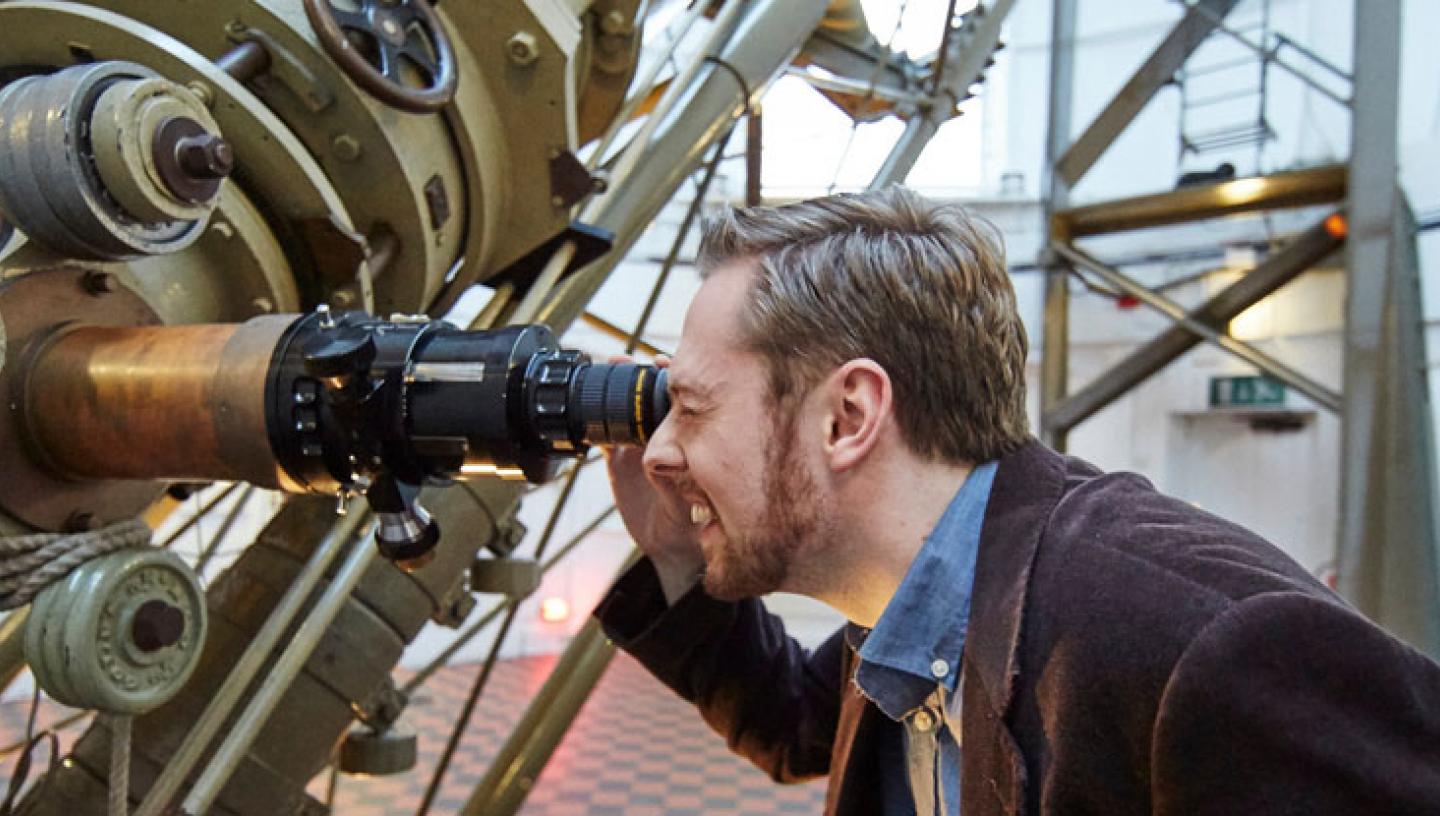Astronomers degree - Embark on a captivating journey into the cosmos with an astronomer's degree, the gateway to unraveling the mysteries of the universe. This comprehensive guide will illuminate the path to becoming an astronomer, exploring career options, research areas, essential tools, and the art of communicating astronomy to the public.
From the fundamentals of astronomy to cutting-edge research, this guide will equip you with the knowledge and insights to navigate the vast expanse of the celestial realm.
Educational Pathways to an Astronomer Degree
 The path to becoming an astronomer typically involves pursuing a bachelor's degree in astronomy, physics, or a related field, followed by a doctorate in astronomy.
The path to becoming an astronomer typically involves pursuing a bachelor's degree in astronomy, physics, or a related field, followed by a doctorate in astronomy.
Undergraduate Programs
Undergraduate programs in astronomy provide a solid foundation in the fundamental principles of astronomy, including astrophysics, cosmology, and observational techniques. Students also gain hands-on experience through research projects, internships, and observing sessions.Graduate Programs
Graduate programs in astronomy offer advanced coursework, research opportunities, and teaching experience. Students conduct original research under the supervision of faculty mentors, present their findings at conferences, and publish their work in peer-reviewed journals.Importance of Research Experience and Internships
Research experience and internships play a crucial role in the education of astronomers. They provide students with the opportunity to apply their knowledge, develop their research skills, and establish connections within the astronomy community.Career Options for Astronomers
Astronomers possess a diverse range of career opportunities that extend beyond traditional academic settings. They can contribute their expertise in various sectors, including academia, government agencies, and private industries.Academia
Within academia, astronomers typically hold positions as professors or researchers at universities or research institutions. They conduct research, teach courses, mentor students, and publish their findings in scientific journals. Academic astronomers play a crucial role in advancing our understanding of the universe and training the next generation of astronomers.Government Agencies
Government agencies, such as NASA and the European Space Agency (ESA), employ astronomers to conduct research, develop space missions, and provide scientific advice on space exploration and policy. Astronomers working in government agencies contribute to our knowledge of the solar system, exoplanets, and the wider cosmos.Industry
Astronomers also find employment in the private sector, particularly in industries related to space exploration, optics, and data analysis. They work on projects involving the design and construction of telescopes, spacecraft, and scientific instruments. Additionally, astronomers with expertise in data analysis and modeling can apply their skills in fields such as finance, healthcare, and environmental science.Research Areas in Astronomy

Astronomy, the study of celestial objects and phenomena, encompasses a vast array of research areas, each with its unique focus and methodologies. From the exploration of our solar system to the investigation of distant galaxies, astronomers delve into the mysteries of the universe, pushing the boundaries of our knowledge.
Observational Astronomy
Observational astronomy involves the collection and analysis of data from celestial objects using telescopes and other instruments. Astronomers employ various observational techniques, including:
- Optical astronomy: Uses visible light telescopes to study stars, planets, and other objects within our solar system and beyond.
- Radio astronomy: Utilizes radio telescopes to detect and study radio waves emitted by celestial objects, providing insights into their composition and behavior.
- Infrared astronomy: Employs infrared telescopes to observe objects that emit infrared radiation, such as cool stars and dust clouds.
- X-ray astronomy: Involves the use of X-ray telescopes to study high-energy phenomena, including black holes and neutron stars.
Theoretical Astronomy
Theoretical astronomy focuses on developing mathematical models and simulations to explain astronomical observations and predict future phenomena. Key areas of theoretical research include:
- Cosmology: Explores the origin, evolution, and large-scale structure of the universe.
- Astrophysics: Investigates the physical properties and processes of celestial objects, such as stars, planets, and galaxies.
- Astroparticle physics: Studies the interaction between particles and astrophysical objects, such as cosmic rays and dark matter.
Cutting-Edge Research Projects
Current cutting-edge research projects in astronomy include:
- The Event Horizon Telescope: An international collaboration using a network of radio telescopes to image the supermassive black hole at the center of our galaxy, Sagittarius A*.
- The James Webb Space Telescope: A space-based infrared telescope designed to study the earliest galaxies in the universe and search for signs of life on exoplanets.
- The Laser Interferometer Gravitational-Wave Observatory (LIGO): A pair of detectors that have detected gravitational waves from merging black holes and neutron stars.
Tools and Technologies for Astronomers
Astronomers utilize a vast array of tools and technologies to unravel the mysteries of the cosmos. From telescopes that gather faint light to spectrometers that analyze the chemical composition of celestial objects, these instruments play a crucial role in advancing our understanding of the universe.
Telescopes
Telescopes are the primary tools for observing distant objects in the sky. They collect and focus light from celestial objects, allowing astronomers to study their properties in detail. There are various types of telescopes, each designed for specific purposes.
- Optical telescopes collect visible light, enabling astronomers to observe stars, planets, galaxies, and other objects that emit or reflect visible radiation.
- Radio telescopes detect radio waves emitted by celestial objects, providing insights into phenomena such as star formation, black holes, and the cosmic microwave background.
- Infrared telescopes capture infrared radiation, allowing astronomers to study objects obscured by dust and gas, such as protoplanetary disks and the centers of galaxies.
Spectrometers, Astronomers degree
Spectrometers are instruments that analyze the wavelength of light emitted or absorbed by celestial objects. By studying the patterns in these spectra, astronomers can determine the chemical composition, temperature, and motion of stars, planets, and other astronomical objects.
Computational Modeling and Simulations
Computational modeling and simulations play a vital role in astronomy. They allow astronomers to create virtual models of the universe and run simulations to test theories and predict the behavior of celestial objects. These techniques have been instrumental in understanding complex phenomena such as galaxy formation, the evolution of stars, and the behavior of black holes.
Communicating Astronomy to the Public
Astronomy has always fascinated humanity, inspiring wonder and curiosity. Communicating astronomy to the public is crucial for several reasons. It fosters scientific literacy, enhances public engagement with science, and promotes an appreciation of our place in the universe.
Effective communication involves tailoring messages to diverse audiences. For children, interactive exhibits and hands-on activities spark interest. For the general public, engaging presentations and accessible resources can ignite a passion for astronomy. For educators, professional development programs provide tools to incorporate astronomy into curricula.
Outreach Programs and Educational Initiatives
Astronomy outreach programs play a vital role in bringing astronomy to the public. These programs include:
- Stargazing events: Allow the public to observe celestial objects and learn about astronomy.
- Science fairs and festivals: Provide hands-on activities and interactive displays.
- Citizen science projects: Engage the public in data collection and research.
Educational initiatives also support astronomy communication. Schools and universities offer astronomy courses, workshops, and lectures. Online resources, such as videos, podcasts, and websites, make astronomy accessible to anyone with an internet connection.
Final Review: Astronomers Degree

As you delve into the realm of astronomy, remember that the universe holds endless possibilities for discovery and exploration. With an astronomer's degree as your compass, you will be empowered to push the boundaries of our understanding and contribute to the ever-expanding tapestry of human knowledge.
FAQ
What is the typical academic path to becoming an astronomer?
The typical academic path involves obtaining a bachelor's degree in astronomy, physics, or a related field, followed by a master's degree and a doctorate in astronomy.
What are the different types of astronomical observations and data analysis techniques?
Astronomical observations involve collecting data from telescopes and other instruments, while data analysis techniques include statistical analysis, modeling, and visualization.
What are the major research areas within astronomy?
Major research areas include cosmology, astrophysics, planetary science, and astrobiology.





